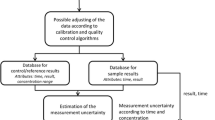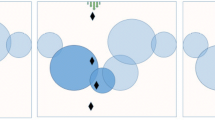Abstract
This paper studies the impact of sensor measurement error on designing a water quality monitoring network for a river system, and shows that robust sensor locations can be obtained when an optimization algorithm is combined with a statistical process control (SPC) method. Specifically, we develop a possible probabilistic model of sensor measurement error and the measurement error model is embedded into a simulation model of a river system. An optimization algorithm is used to find the optimal sensor locations that minimize the expected time until a spill detection in the presence of a constraint on the probability of detecting a spill. The experimental results show that the optimal sensor locations are highly sensitive to the variability of measurement error and false alarm rates are often unacceptably high. An SPC method is useful in finding thresholds that guarantee a false alarm rate no more than a pre-specified target level, and an optimization algorithm combined with the thresholds finds a robust sensor network.









Similar content being viewed by others
References
Bierkens MFP (2006) Designing a monitoring network for detecting groundwater pollution with stochastic simulation and a cost model. Stoch Environ Res Risk Assess 20(5):335–351
EPA (2001) The precision and accuracy of environmental measurements for the building assessment survey and evaluation program. Tech. rep., U.S. Environmental Protection Agency, Environmental Health and Engineering Inc
Kim S-H, Alexopoulosc C, Tsui KL, Wilson JR (2007) A distribution-free tabular CUSUM chart for autocorrelated data. IIE Trans 39(3):317–330
Montgomery DC (2009) Introduction to statistical quality control. Wiley, New York
Nelson BL (2010) Optimization via simulation over discrete decision variables. Tutor Oper Res 7:193–207
North GR, Nakamoto S (1989) Formalism for comparing rain estimation designs. J Atmos Ocean Technol 6(6):985–992
Park C, Kim S-H (2015) Penalty function with memory for discrete optimization via simulation with stochastic constraints. Oper Res 63:1195–1212
Park C, Telci I, Kim S-H, Aral MM (2014) Designing an optimal water quality monitoring network for river systems using constrained discrete optimization via simulation. Eng Optim 46(1):107–129
Shi L, Ólafsson S (2000) Nested partitions method for stochastic optimization. Methodol Comput Appl Probab 2(3):271–291
Strobl R, Robillard R (2008) Network design for water quality monitoring of surface freshwaters: a review. J Environ Manag 87(4):639–648
Storey MV, Gaag B, Burns BP (2011) Advances in on-line drinking water quality monitoring and early warning systems. Water Res 45:741–747
Telci I, Aral MM (2011) Contaminant source location identification in river networks using water quality monitoring systems for exposure analysis. Water Qual Expo Health 2(3):205–218
Telci I, Nam K, Guan J, Aral MM (2008) Real time optimal monitoring network design in river networks. World Environmental and Water Resources Congress 2008, Environmental And Water Resources Institute (EWRI) of the American Society of Civil Engineers. Honolulu, Hawaii, pp 1–10
Telci I, Nam K, Guan J, Aral MM (2009) Optimal water quality monitoring network design for river systems. J Environ Manag 90:2987–2998
Yoo C (2000) On the sampling errors from raingauges and microwave attenuation. Stoch Environ Res Risk Assess 14:69–77
Wang H, Harrison KW (2000) Bayesian approach to contaminant source characterization in water distribution systems: adaptive sampling framework. Stoch Environ Res Risk Assess 27(8):1921–1928
Acknowledgments
This material is based upon work supported by NSF under Grants CMMI-0644837 and CMMI-1538746 and Hanyang University under Grant HY-2014000000465. All data we used to derive measurement error model and parameters can be obtained from EPA (2001). For a detailed explanation of data used to form rain patterns, we refer readers to Telci and Aral (2011).
Author information
Authors and Affiliations
Corresponding author
Electronic supplementary material
Below is the link to the electronic supplementary material.
Rights and permissions
About this article
Cite this article
Kim, SH., Aral, M.M., Eun, Y. et al. Impact of sensor measurement error on sensor positioning in water quality monitoring networks. Stoch Environ Res Risk Assess 31, 743–756 (2017). https://doi.org/10.1007/s00477-016-1210-1
Published:
Issue Date:
DOI: https://doi.org/10.1007/s00477-016-1210-1




